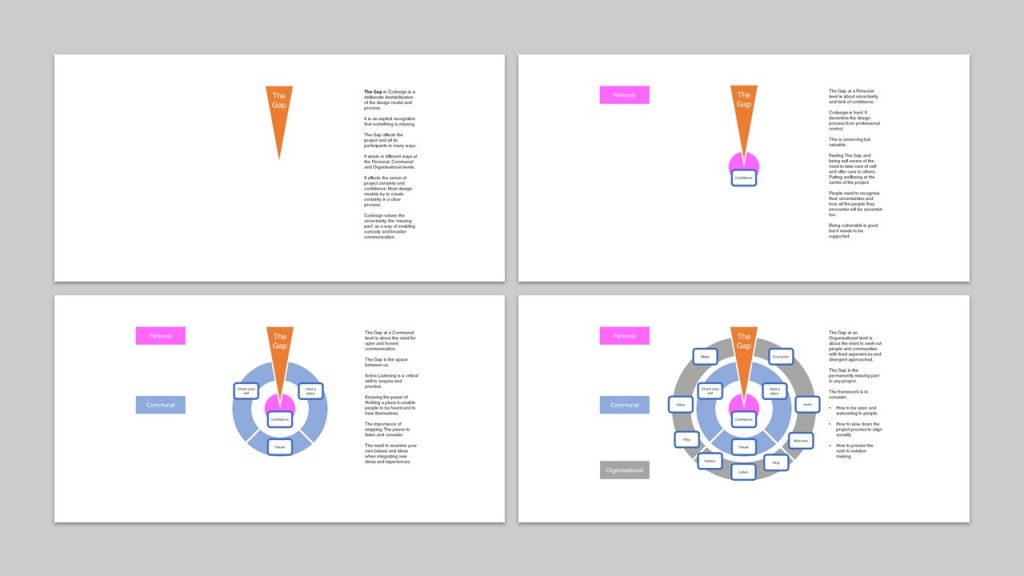
This is prototype for a workshop for young people who are starting a new cultural codesign project.
I have 90 minutes to offer some advice. What I hope to do is:
- validate their feelings of uncertainty and vulnerability and show they are strengths
- offer some skills on communicating better and thinking about wellbeing and self-care
- show a framework that is about valuing meeting new people, listening, playing and making
I will start the workshop by showing how failure is inherent in my own accessibility work and that every failure is an opportunity to listen and make something better.
The power of codesign is in its instability and its openess to new people, new conversations and new possibilities. I want to show that to the workshop participants so they feel they can do something new together while respecting themselves and the people they encounter along the way.
The Gap

The Gap in Codesign is a deliberate destabilisation of the design model and process.
It is an explicit recognition that something is missing.
The Gap affects the project and all its participants in many ways.
It exists in different ways at the Personal, Communal and Organisational levels.
It affects the sense of project certainty and confidence. Most design models try to create certainty in a clear process. Codesign values the uncertainty, the ‘missing part’, as a way of enabling curiosity and broader communication.
Personal Confidence and Care

The Gap at a Personal level is about uncertainty and lack of confidence.
Codesign is hard. It decentres the design process from professional control.
This is unnerving but valuable.
Feeling The Gap and being self-aware of the need to take care of self and offer care to others. Putting wellbeing at the centre of the project.
People need to recognise their uncertainties and how all the people they encounter will be uncertain too.
Being vulnerable is good but it needs to be recognised and supported.
Communication and Communities

The Gap at a Communal level is about the need for open and honest communication.
The Gap is the space between us.
Active Listening is a critical skill to acquire and practice.
Knowing the power of Holding a place to enable people to be heard and to hear themselves.
The importance of stopping. The pause to listen and consider.
The need to examine your own biases and ideas when integrating new ideas and experiences.
Organisations and the never filled gap

The Gap at an Organisational level is about the need to seek out people and communities with lived experiences and divergent approached.
The Gap is the permanently missing part in any project.
The framework is to consider:
- How to be open and welcoming to people.
- How to slow down the project process to align socially.
- How to prevent the rush to solution making.